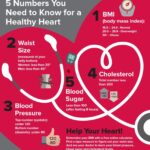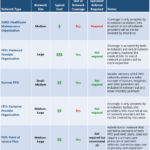National Women's Health Week: Your Guide to Prioritizing Well-being in May

What Is National Women’s Health Week?
National Women’s Health Week is an annual observance in the United States, held every May, beginning on Mother’s Day. In 2025, it runs from May 11 to May 17. The week is led by the U.S. Department of Health and Human Services Office on Women’s Health (OWH) and is dedicated to highlighting women’s health issues, raising awareness, and encouraging women of all ages to make their health a priority [1] .
Why Is Women’s Health Week Important?
Women face unique health challenges throughout life, including menopause, pregnancy, and conditions such as osteoporosis, mental health issues, and cancer. National Women’s Health Week is designed to empower women to take proactive steps toward their physical, mental, and emotional well-being. The week is also a call to action for women to schedule preventive screenings, foster healthy habits, and engage in open conversations about health with their providers and loved ones [2] .
Key Focus Areas for 2025
The 2025 observance emphasizes three main areas:
- Menopause : Over 1 million U.S. women experience menopause each year. The average age is 52, with most women reaching menopause between ages 45 and 55. Understanding the symptoms and management strategies can improve quality of life during this transition [1] .
- Mental Health : Women are nearly twice as likely as men to experience major depression. Around 1 in 5 women face mental health issues during pregnancy or the first year postpartum. Mental well-being is a crucial component of overall health [1] .
- Cancer : Cancer remains a leading cause of death among women, responsible for 1 in 6 deaths. Women under 50 are nearly twice as likely as men in the same age group to develop cancer. Early detection and regular screenings are vital [1] .
How to Get Involved: Steps to Prioritize Your Health
National Women’s Health Week is about taking action. Here are steps you can take to prioritize your health during May and all year long:
1.
Schedule Preventive Screenings
Routine screenings can help detect health problems early, when they are most treatable. Examples include mammograms, Pap smears, bone density tests, cholesterol checks, and blood pressure measurements. To schedule these, contact your primary care provider or visit your local health clinic. If you have insurance, check your plan for coverage details. If uninsured, you may be eligible for free or low-cost screenings through state health departments or programs such as the CDC’s National Breast and Cervical Cancer Early Detection Program. Search “women’s health screenings” on your state health department website for specific options.

Source: nonabsigrid.pages.dev
2.
Focus on Mental Wellness
Mental health is as important as physical health. If you’re feeling overwhelmed, anxious, or depressed, consider reaching out to a mental health professional. Many employers offer Employee Assistance Programs (EAPs), and community health centers often provide counseling on a sliding scale. If you need immediate assistance, the National Suicide Prevention Lifeline (1-800-273-8255) offers support 24/7. You can also search “women’s mental health resources” for local options.
3.
Adopt Healthy Habits
Healthy lifestyle choices, such as regular physical activity, balanced nutrition, stress management, and adequate sleep, are the foundation of well-being. Start by setting small, achievable goals-like walking 30 minutes a day or preparing one healthy meal at home each day. If you need support, many local YMCAs and community centers offer women’s fitness and nutrition classes.
4.
Learn About Menopause and Reproductive Health
Understanding changes in your body empowers you to make informed decisions. Menopause brings hormonal shifts that can affect mood, sleep, and bone health. Talk to your healthcare provider about managing symptoms and maintaining bone density. For reproductive health, regular gynecological visits are key, and providers can offer advice on contraception, fertility, and pregnancy planning.

Source: wallup.net
5.
Address Pelvic Floor Health
Pelvic floor disorders, such as urinary incontinence and pelvic organ prolapse, affect millions of women. The 2025 theme “Know Your Pelvic Floor” highlights the need for awareness and open conversation. If you experience symptoms like leakage or discomfort, speak with a gynecologist or pelvic floor specialist. Physical therapy, lifestyle adjustments, and medical treatments may be available. To locate a specialist, search for “pelvic floor therapist near me” or request a referral from your provider [3] .
Accessing Women’s Health Services: Practical Guidance
Women’s health services are available through a variety of channels. Here’s how to find and access them:
- Primary Care Providers : Your family doctor, internist, or OB/GYN can provide preventive care, screenings, and referrals.
- Community Health Centers : Federally qualified health centers offer services regardless of ability to pay. To find a center, visit the Health Resources and Services Administration (HRSA) website or search “community health center locator” online.
- State and Local Health Departments : Many state and local agencies run women’s health programs or offer screenings. Search “women’s health program” with your state’s name for specific resources.
- Insurance Provider Networks : If you have health insurance, log in to your provider’s website to search for in-network women’s health specialists.
- Employer Assistance : Some workplaces offer onsite wellness programs and health fairs during Women’s Health Week. Check with your HR department for details.
Overcoming Challenges and Barriers
Many women face barriers to optimal health, including lack of insurance, time constraints, or difficulty finding culturally competent care. Solutions include:
- Exploring free or low-cost clinics in your area.
- Looking for telehealth options if you have limited mobility or transportation.
- Connecting with support groups, both in-person and online, for encouragement and information.
- Asking your provider about language interpretation services if English is not your primary language.
If you face a barrier, consider contacting local women’s advocacy organizations or your state health department for help navigating resources.
Case Example: Making the Most of Women’s Health Week
Sarah, a 45-year-old working mother, used National Women’s Health Week as a catalyst to prioritize her health. She scheduled a mammogram, joined a virtual mindfulness class, and learned about pelvic floor exercises from an online seminar offered by her local hospital. By the end of the week, she felt more empowered and organized about her health plan for the year.
Alternative Approaches
If you cannot participate in events during the official week, you can still benefit from the resources and awareness campaigns. Many hospitals and community groups host women’s health fairs, webinars, and screening events throughout May and beyond. Search for “women’s health events near me” or check hospital websites for upcoming activities.
Key Takeaways and Next Steps
National Women’s Health Week serves as a reminder to put your health first, not just for a week, but all year. The most important step is to take action-whether that means making an appointment, having a conversation with a loved one, or simply researching a health topic that affects you. Prioritize your physical, mental, and emotional well-being, and encourage the women in your life to do the same.






